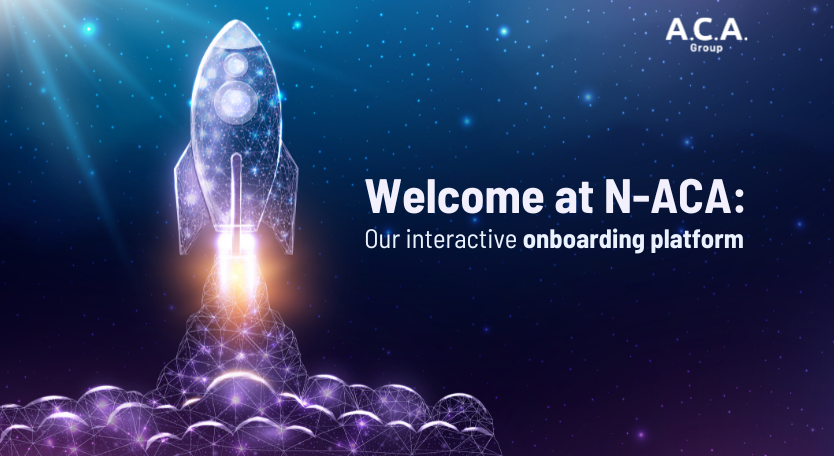In order to view this content, you need to accept Marketing & third party cookies.
Click here to adjust your preferencesThe woningpas, a digital passport for residences
The woningpas is a joint project of several departments of the Flemish government. Together VEA, the Department of Environment, Housing Flanders and OVAM want to combine all information about residences in one digital passport. This platform, the woningpas, needs to collect all necessary certificates and known information about a house or building in one place. Both the owner of the residence and people with a power of attorney can consult the data. This way, the woningpas needs to lead to a simplified administration for the building, rebuilding, renting and selling of residences.
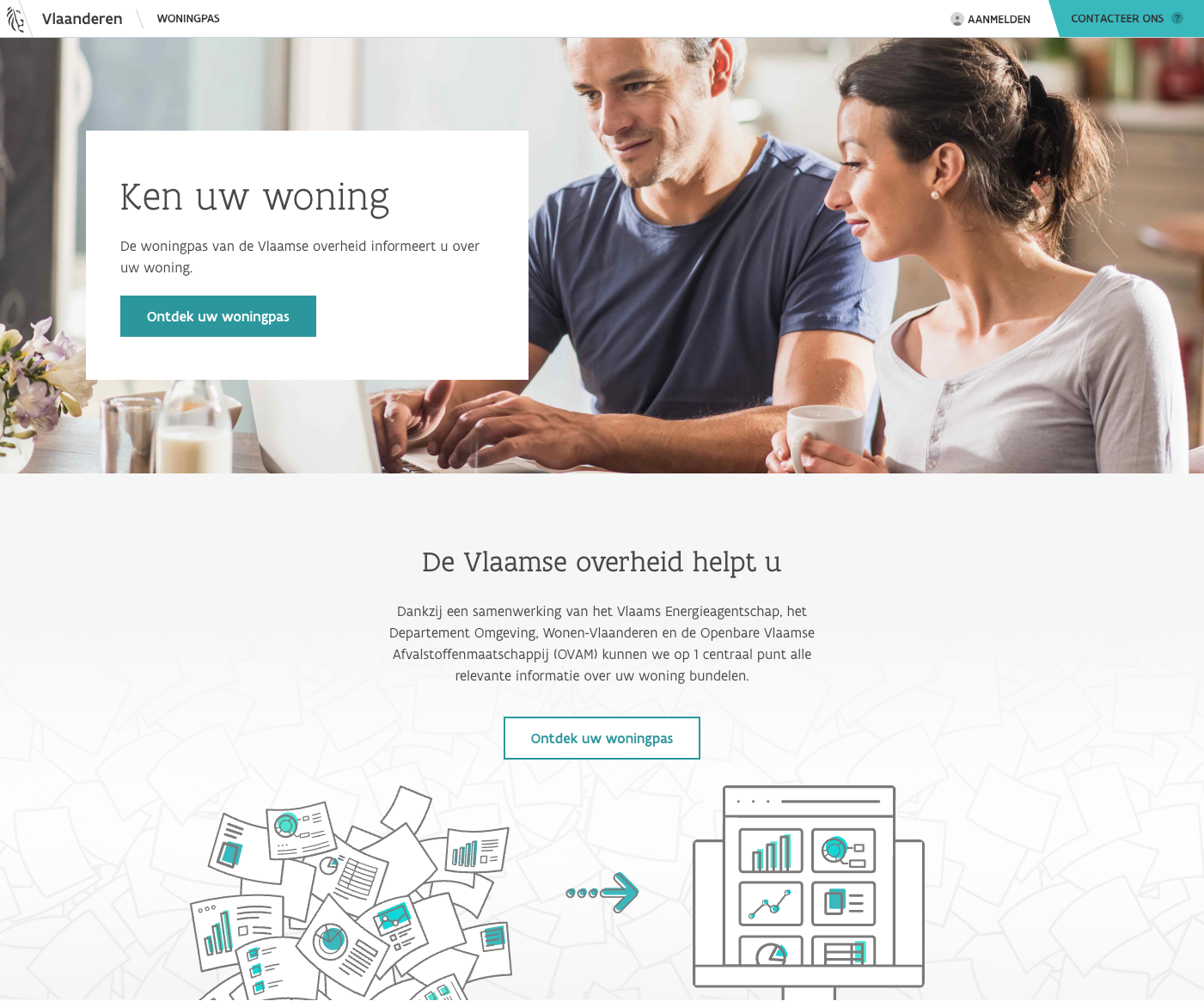
A combination of technologies for the best result
Liferay as a base for the platform
Through an extensive proof of concept, ACA has been able to prove that Liferay DXP is a suitable technology for the woningpas. “Liferay has a lot of advantages for a project like the woningpas,” Peter Mesotten, Portal Expert at ACA, says. “The most important benefit is probably the fact that Liferay is a modular platform, a platform built with many small modules or building blocks, each with their own functionality. Because of this, the woningpas can be extended with new functionalities without any impact on the existing modules.” This means that the platform doesn’t need to go offline during the extensions that are planned in the years to come.
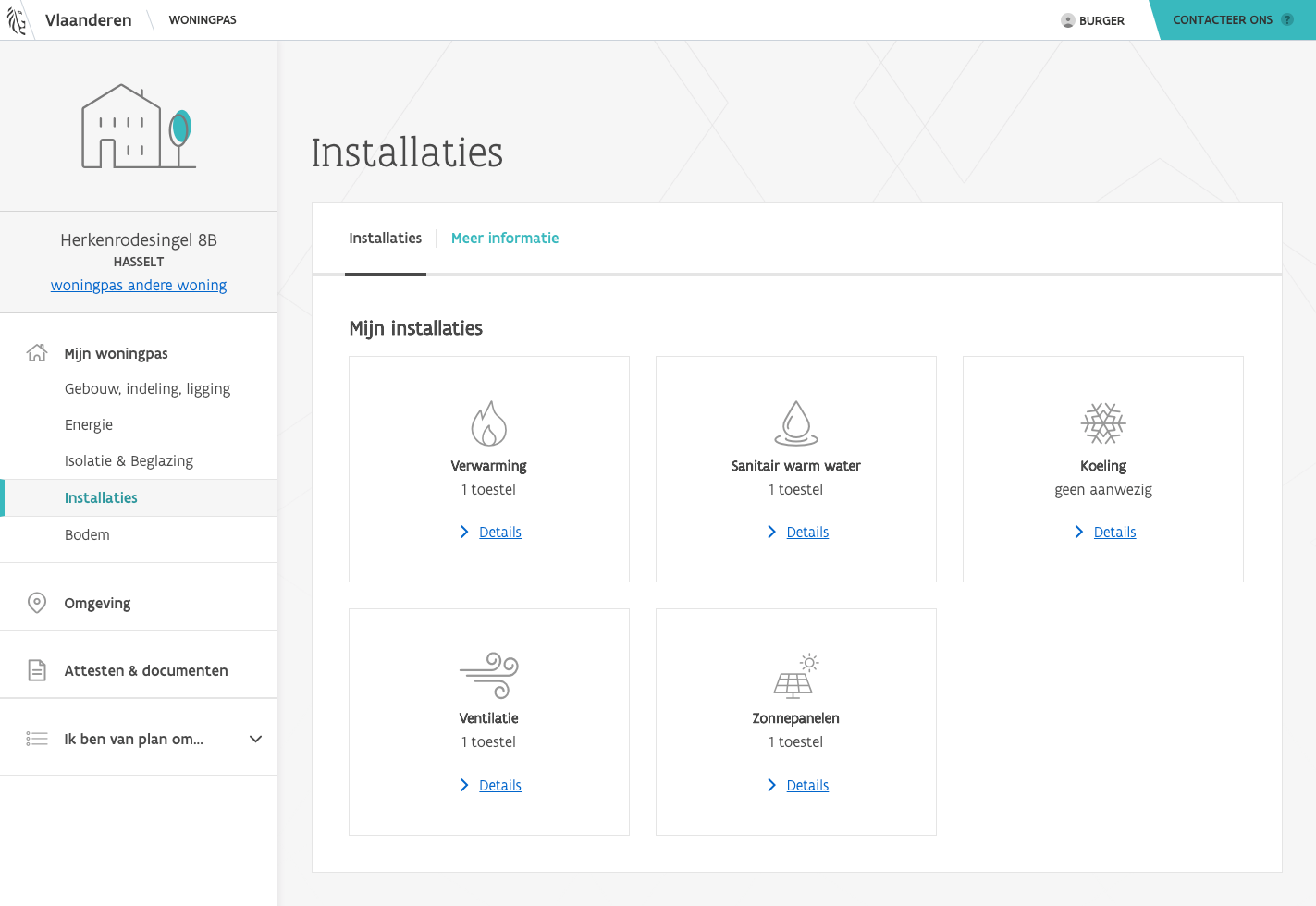
Of course Liferay has other advantages besides modularity. “Liferay’s dashboarding function allows that information from different sources can be combined on the same page. And if a citizen is already logged in in another app of the Flemish government, he can easily consult his data from the woningpas too because of the SSO,” Peter explains. “The CMS part of Liferay is a huge benefit for the employees of the Flemish government. They can use the platform to easily keep textual information up-to-date.” In short, Liferay is a useful platform for everyone involved with the woningpas.
The use of widgets
Using Angular 5, ACA has created widgets or small pieces of information that are shown together on a page. “The widgets of the woningpas get their data from data sources of the various departments of the Flemish government. An intermediate layer built in Spring Boot, a modular platform for microservices, supports them with this,” Peter clarifies. “These microservices transform the raw data from the Flemish government to a meaningfulinterpretation for the citizen.” For example, instead of just showing that the primary energy consumption of a house is 24,52 kWh/m²/year, the citizen gets the interpretation that his home is “very energy-efficient” and doing well compared to similar houses in its immediate surroundings. “Caching, in turn, makes sure that data only need to be requested once from the sources of the Flemish government and are saved in the intermediate layer afterwards.”
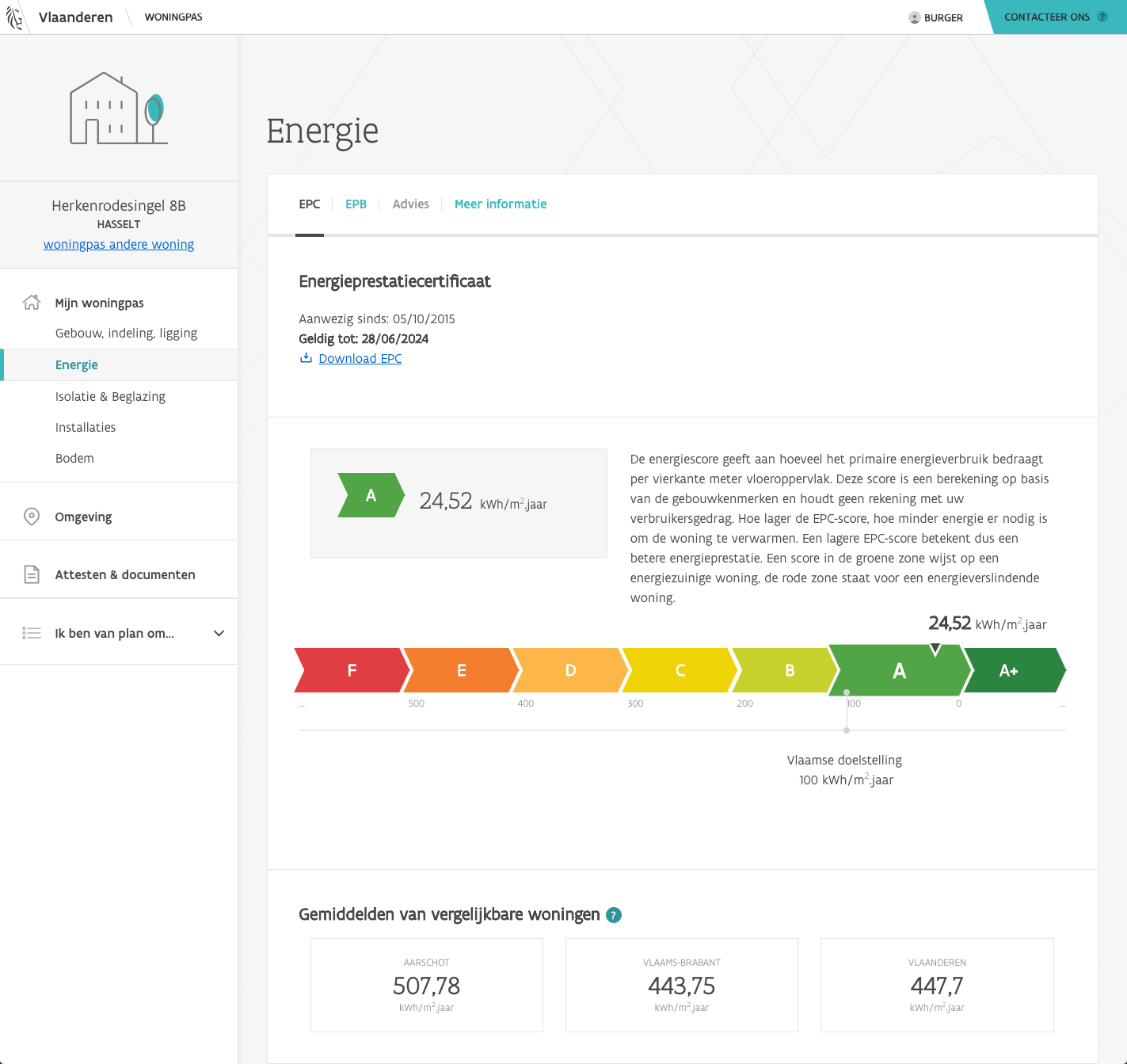
Security was an important aspect of the woningpas too. JSON Web Tokens (JWT) secure the communication channel between Liferay and Spring Boot. It guarantees that unauthorized people can’t retrieve data that they shouldn’t be able to see. This way, it becomes impossible for people to view data from other residences.
A methodology that closely involves the Flemish government
Agile with a pinch of Scrum and Kanban
The agile methodology is fully embedded at ACA IT-Solutions. “We use an agile combination of Scrum and Kanban in all our projects, so also in the woningpas,” Reinert D’haene, Business Analyst / Project Manager at ACA, relates. “The Scrum approach is most obvious in our daily stand-up meetings with the team and the sprints in which we take on a predefined amount of scope or stories. Every three weeks, there is also a delivery moment with a demonstration of the new functionality of the woningpas. A Kanban board, in turn, makes it possible for both the Flemish government and us to closely follow up on the project.” Kanban also ensures that the team creates a continuous flow of issues.
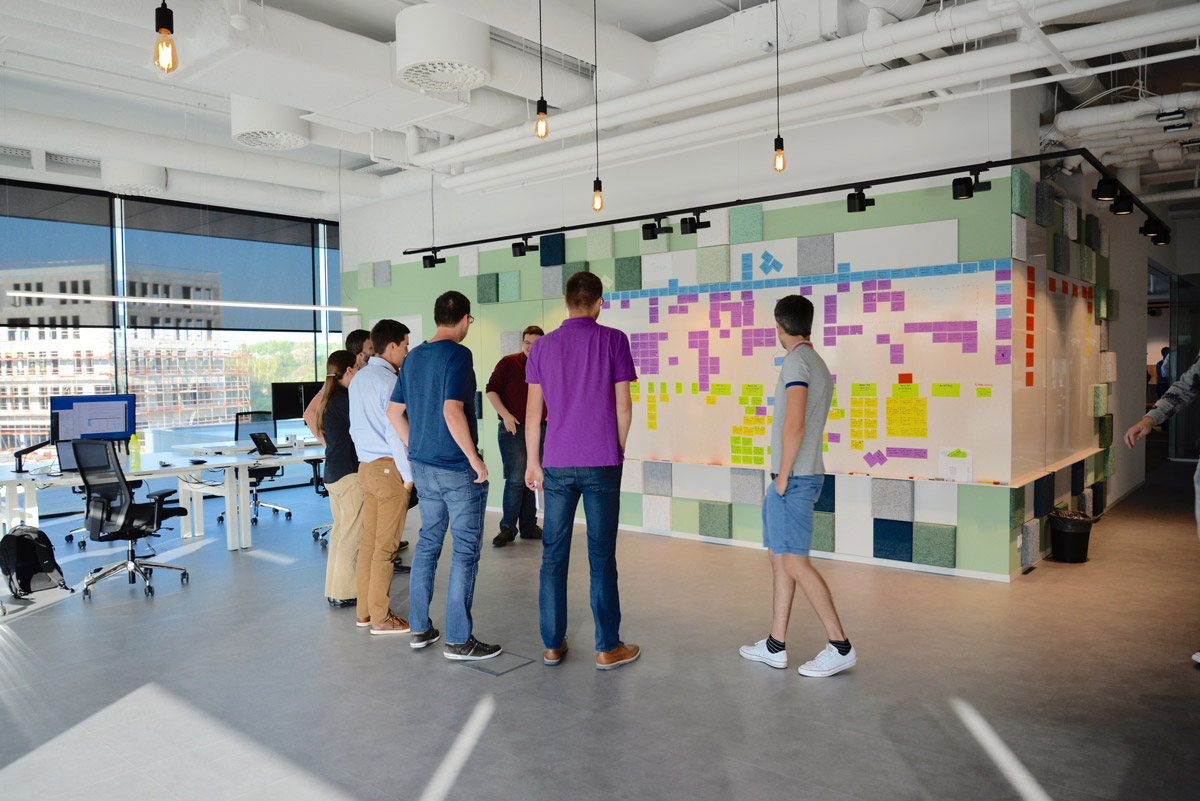
“As a matter of fact, I’m kind of allergic to the word agile, because it’s often used inappropriately. In the case of the woningpas, however, I noticed that the approach is very dynamic, structured and comprehensible,” Tine Vande Casteele, Project Leader of the woningpas at VEA, says. “By using small, extremely detailed user stories, we get a good overview of the structure of the project. It’s unbelievable how ACA has been able to structure a prototype with all these small pieces of functionality in a systematic manner.” Karel Dieussaert, Product Owner of the woningpas, complements her: “These user stories are already subjected to a thorough internal review while writing them down and during development. This only improves the quality of course.”
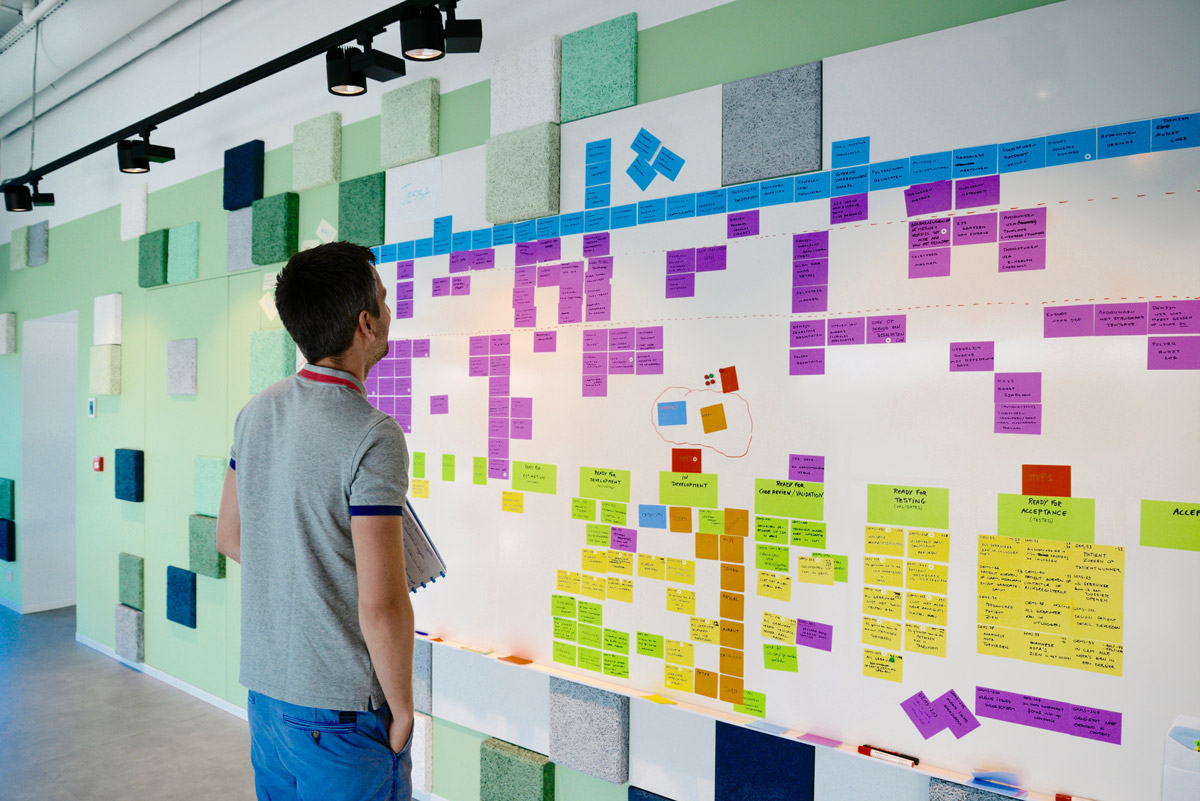
It’s perfectly possible to add or delete user stories with the agile methodology. “The methodology is therefore very flexible and allows the necessary adjustments based on the insights we get during the course of the project,” Karel explains. “Further, the three-weekly sprint reviews always give us a good view on the progress of the woningpas.”
In order to view this content, you need to accept Marketing & third party cookies.
Click here to adjust your preferencesA transparent approach for the client
Transparency is a key value for ACA, both within the organization and towards clients. “Our approach creates maximum added value if we can start with a mutual trust,” Jelle Van der Linden, Digital Flow Consultant at ACA, explains. “Trust, however, is something that your need to earn and that isn’t always easy… Luckily, our transparant communication usually eliminates all doubts in no time at all. The click between our own team and our client’s team is even more important though, as was certainly the case with Flemish government.”
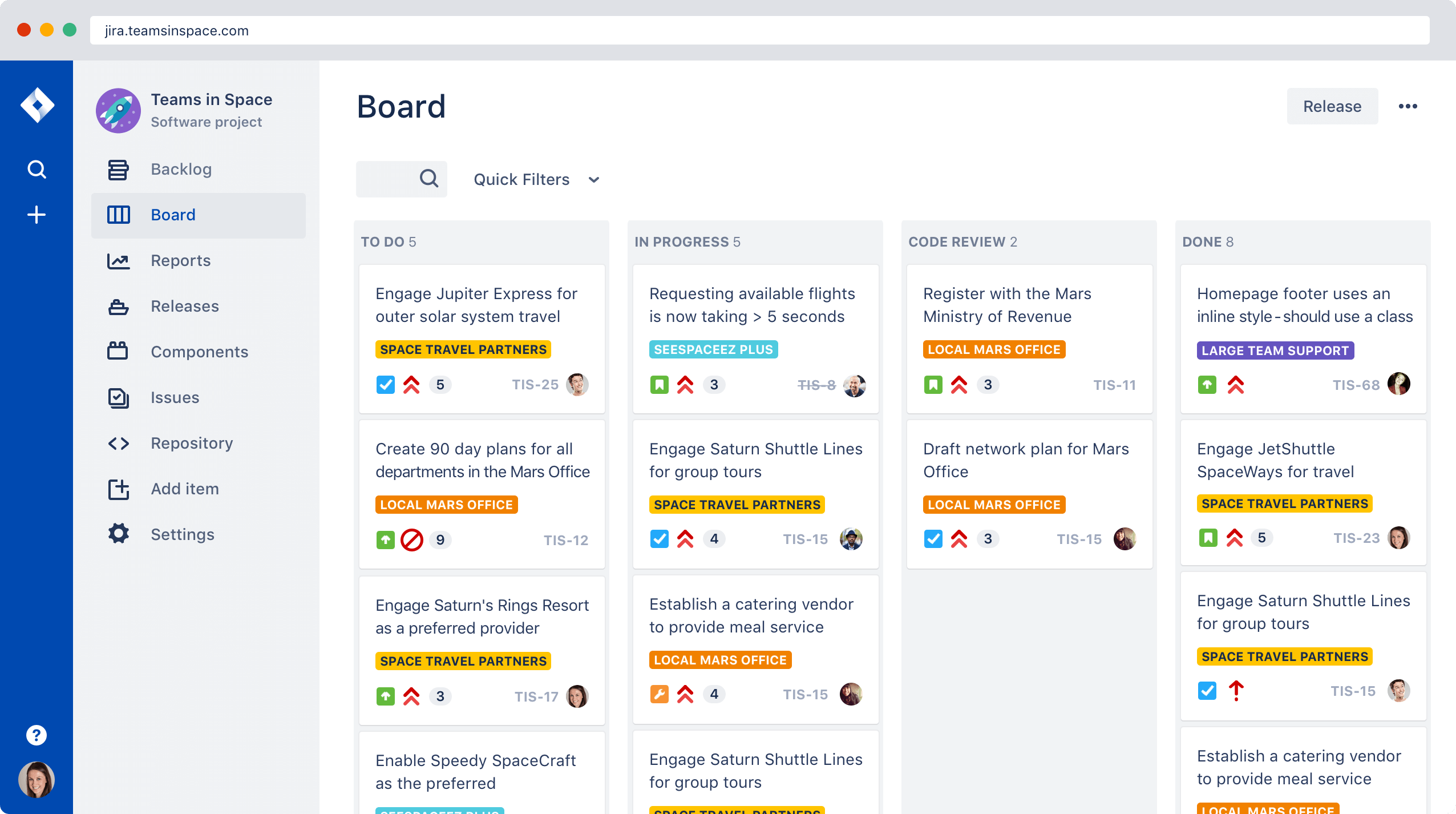
Karel confirms the transparent approach: “The work ACA delivers is always very structured and clear because of JIRA, their issue and project tracking system.” Already from the start of the woningpas project, ACA chose to use both online and offline dashboards with user stories in the shape of post-its. “These dashboards perfectly allow us to follow which phase our project has started and if everything goes according to plan,” Tine continues. “Because of the subdivision in MVPs (or phases) and user stories, we also have a good view on the prognosis of our platform.”
After consulting ACA, the Flemish government can always move user stories or even speed up the project by making adjustments in the number of resources. Besides the flexibility in project management, Tine also praises the test environment of ACA “in which we can visually see and verify if everything is implemented according to our needs and wishes.” Karel rather appreciates “the open way of communicating about the ambiguities, assumptions and risks of the project.”
Demonstrations, a useful way to keep up-to-date
Every three weeks ACA gives a short, but powerful presentation of 1 to 1,5 hour for all departments of the Flemish government that are involved with the woningpas. “In the first phase of development, especially VEA and OVAM are closely involved. During the interim meetings, though, all parties get an update of the project through short demonstrations. This way, they keep up-to-date on the general matters and the evolution of the project without losing too much time,” Tine says.
The feedback that emerges during these presentations, is immediately put in user stories. ACA creates these new user stories on the spot and puts them on the online dashboard. According to Tine, this saves her a lot of time: “Because there are automatic notes of our feedback, we don’t lose as much time with the follow-up anymore. Our feedback immediately appears in the dashboard and we know that ACA will deal with it.”
A large team of experts
“Despite the initial lack of knowledge on energy and residences, ACA has had a good view on the necessary functionality for the woningpas platform since the start of the project,” Tine continues her story. “Based on the user stories they also made an estimation of the timing and budget of development. So far both the functionality and budget are completely in line with the expectations. It certainly requires some expertise to predict this correctly.”
Further, ACA uses a versatile team of analysts and developers with a specific domain knowledge based on the needs of the project. According to Karel, ACA has put together a nicely balanced and complementary team for the woningpas. He also speaks about “the research and internal expert reviews that ensure a consistent solution” as a sign of ACA’s expertise.
The woningpas team actually consists of 3 different parties that work on a common goal as one team. Whether they are working from one of the ACA offices or from the office of OVAM, there’s always a good vibe between all team members. That’s also what is making a success of the project. Or as Jelle explains it: “It’s very motivating to the entire ACA team that the team of the Flemish government doesn’t only open up to us, but also trusts and involves ACA in all aspects of the project.”
“In each part of the project, we can see that everyone at ACA feels responsible for the woningpas,” Tine concludes. “This makes us feel good about the project and its development, especially given the high visibility.” It’s clear: the Flemish government fully trusts ACA as a development partner.
— Tine Vande Casteele , Project Manager at VEKA
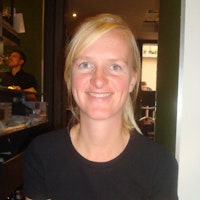
In November of 2019, woningpas won the Henry van de Velde Design Award 2020 in the Digital Product category.
Related customer success stories
- How our onboarding platform gives new colleagues a flying start. (And saves HR a lot of time)
N-ACA is ACA Group’s custom onboarding platform that centralizes all information and guides new colleagues through a fun, intuitive, NASA-inspired experience. It saves HR significant time by streamlining content management and ensuring every onboarding journey is consistent and complete.
- PV panels or a heat pump? We developed an additional advice module for the Woningpas
Together with Demo B-Log and VEKA, we developed an intelligent advice module on top of the existing Woningpas platform. It brings fragmented data together, runs smart calculations, and offers clear, tailored guidance on sustainable investments, like heat pumps or solar panels.
- Goodbye, paper maze! We developed the Gebouwenpas, a single digital platform that brings together all real estate data
We developed the Gebouwenpas: a digital passport that brings together all building data in one place. Read all about it in this case.
